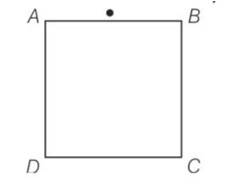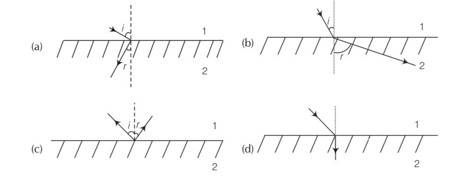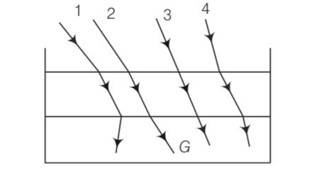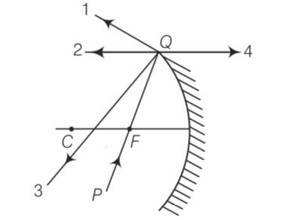Physics NCERT Exemplar Solutions Class 12th Chapter Nine
Get insights from 101 questions on Physics NCERT Exemplar Solutions Class 12th Chapter Nine, answered by students, alumni, and experts. You may also ask and answer any question you like about Physics NCERT Exemplar Solutions Class 12th Chapter Nine
Follow Ask QuestionQuestions
Discussions
Active Users
Followers
New answer posted
5 months agoContributor-Level 10
This is a multiple choice answer as classified in NCERT Exemplar
(a, b) A magnifying glass is used, as the object to be viewed can be brought closer to the eye than the normal near point. This results in a larger angle to be subtended by the object at the eye and hence, viewed in greater detail. Morever, the formation of a virtual erect and enlarged image, takes place.
New answer posted
5 months agoContributor-Level 10
This is a multiple choice answer as classified in NCERT Exemplar
(a, d) Alexandar's dark band lies between the primary and secondary rainbows, forms due to light Scattered into this region interfere destructively.
Since, primary rainbows subtends an angle nearly 41° to 42° at observer's eye, whereas, secondary rainbows subtends an angle nearly 51° to 54° at observer's eye w.r.t. incident light ray. So, the scattered rays with respect to the incident light of the sun lies between approximately 42°and50°.
New answer posted
5 months agoContributor-Level 10
This is a multiple choice answer as classified in NCERT Exemplar
(d) For µ = 16., the critical angle, µ = 1/ sin C, we have C = 38.7°, when viewed from AD, as long as angle of incidence on AD of the ray emanating from pin is greater than the critical angle, the light suffers from total internal reflection and cannot be seen through AD.
New answer posted
5 months agoContributor-Level 10
This is a multiple choice answer as classified in NCERT Exemplar
(a, b, c) When immersed object is seen from close to the edge of the trough the object looks distorted because the apparent depth of the points close to the edge are nearer the surface of the water compared to the points away from the edge.
The angle subtended by the image of the object at the eye is smaller than the actual angle subtended by the object in air and some of the points of the object far away from the edge may not be visible because of total internal reflection.
New answer posted
5 months agoContributor-Level 10
This is a multiple choice answer as classified in NCERT Exemplar
(a) The negative refractive index metamaterials are those in which incident ray from air (Medium 1) to them refract or bend differently to that of positive refractive index medium.
New answer posted
5 months agoContributor-Level 10
This is a multiple choice answer as classified in NCERT Exemplar
(d) The speed of the image of the car would appear to increase as the distance between the cars decreases.
New answer posted
5 months agoContributor-Level 10
This is a multiple choice answer as classified in NCERT Exemplar
Here, light ray goes from (optically) rarer medium air to optically denser terpentine, then it bends towards the normal i.e., i>r whereas when it goes from to optically denser medium terpentine to rarer medium water. then it bends away the normal i.e., i
New answer posted
5 months agoContributor-Level 10
This is a multiple choice answer as classified in NCERT Exemplar
(b) The PQ ray of light passes through focus F and incident on the concave mirror, after reflection, should become parallel to the principal axis and shown by ray-2 in the figure.
New answer posted
5 months agoContributor-Level 10
This is a multiple choice answer as classified in NCERT Exemplar
(b) The phenomenon involved in the reflection of radio waves by ionosphere is similar to total internal reflection of light in air during a mirage i.e., angle of incidence is greater than critical angle.
New answer posted
5 months agoContributor-Level 10
This is a multiple choice answer as classified in NCERT Exemplar
(c) R= 20cm, = 1.5, f= = =40cm so lens acts as convex lens.
Taking an Exam? Selecting a College?
Get authentic answers from experts, students and alumni that you won't find anywhere else
Sign Up on ShikshaOn Shiksha, get access to
- 65k Colleges
- 1.2k Exams
- 679k Reviews
- 1800k Answers




